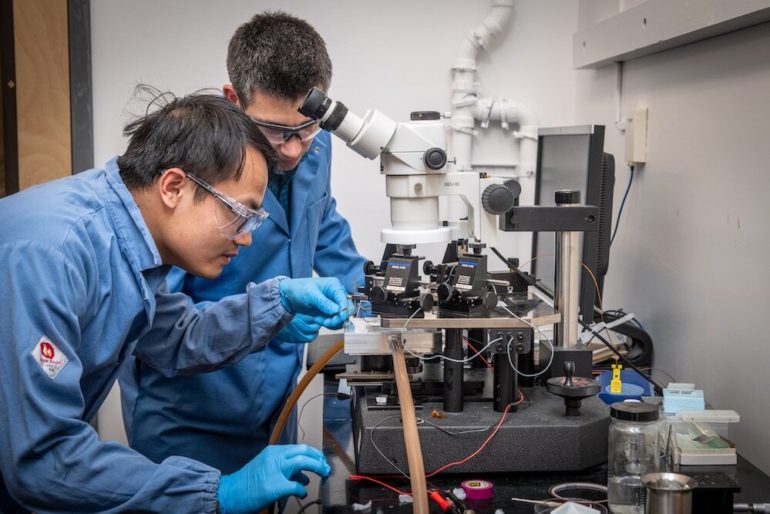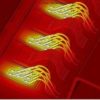With rising interest in backup power, solar power storage, and electric vehicles, the race is on to improve the performance of rechargeable lithium batteries. A Berkeley Lab team has developed an easy, fast, and inexpensive method to measure battery performance.
Led by Ravi Prasher and Sean Lubner of the Energy Technologies Area, the new technique uses thermal waves to measure local lithium concentration as a function of depth inside battery electrodes. Their study was recently published in the journal Joule.
“With our technique, you take a battery, and you put the sensor on top of the battery,” Prasher said. “The sensor sends a signal, and depending on the signal frequency, you can change how deep the wave will penetrate. That way, you control the depth of penetration. It’s much cheaper and faster than other diagnostic procedures, and provides a cheap and faster way to measure battery characteristics.”
This approach is called an “operando” technique, which works while the reaction is happening—demonstrating that thermal wave sensing provides spatial information of lithium concentration comparable to experimental results using synchrotron X-ray diffraction, but without having to use a large synchrotron facility such as the Advanced Light Source.
Measuring battery performance is not an easy task, which makes testing new materials to improve battery performance time-consuming and expensive. When testing materials to improve charging speed, different portions of electrodes have different local states of charge and age at varying rates, so spatially averaged chemical information provided by existing battery diagnostic tools is insufficient for understanding degradation of lithium-ion batteries.
Prasher said that the team is now testing the procedure at the lab scale, and the next step will be testing commercial batteries.
“This work shows the strength of interdisciplinary science,” Lubner said. “The project combines techniques and insight from the thermal and electrochemistry communities in order to achieve a capability that would not have otherwise been possible.”
Speed and absorption key to optimizing a new type of rechargeable battery
More information:
Yuqiang Zeng et al, Operando spatial mapping of lithium concentration using thermal-wave sensing, Joule (2021). DOI: 10.1016/j.joule.2021.06.008
Provided by
Lawrence Berkeley National Laboratory
Citation:
New thermal wave diagnostic technique advances battery performance testing (2021, August 16)
retrieved 16 August 2021
from https://techxplore.com/news/2021-08-thermal-diagnostic-technique-advances-battery.html
This document is subject to copyright. Apart from any fair dealing for the purpose of private study or research, no
part may be reproduced without the written permission. The content is provided for information purposes only.



